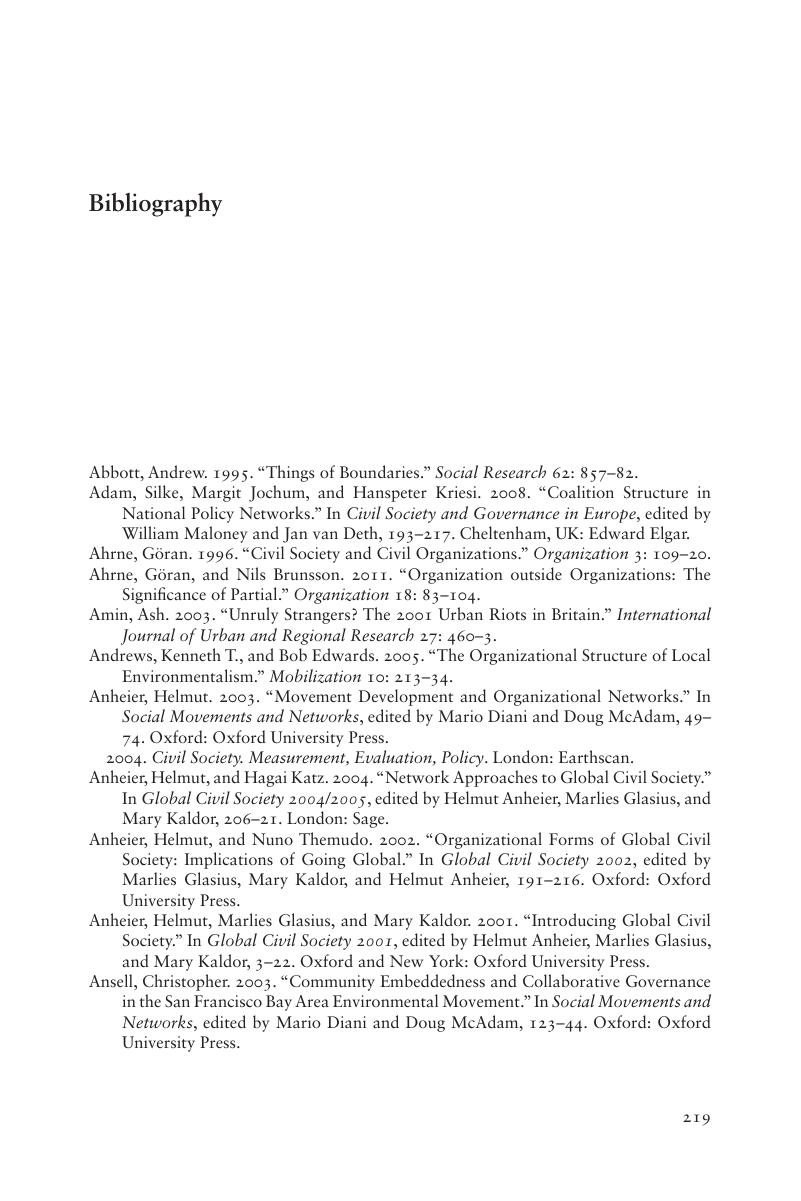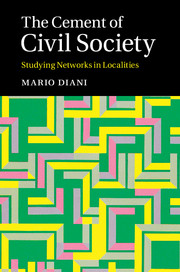Book contents
- The Cement of Civil Society
- Cambridge Studies in Contentious Politics
- The Cement of Civil Society
- Copyright page
- Dedication
- Contents
- Tables and Figures
- Acronyms
- Preface and Acknowledgments
- Introduction: Of King Solomon, Goethe, and Civic Networks
- 1 Modes of Coordination of Collective Action
- 2 The Importance of Local Comparisons: Civic Organizations in British Cities
- 3 Building Civic Networks: Logics of Tie Formation
- 4 The Structural Bases of Civil Society
- 5 Network Positions and Their Incumbents
- 6 The Duality of Organizations and Events
- 7 Network Centrality and Leadership
- 8 Civic Networks and Urban Governance
- 9 “Networking” Contentious Politics
- Postfaction: Bringing Time and Space(s) into the Picture
- Book part
- Bibliography
- Index
- References
Bibliography
Published online by Cambridge University Press: 05 May 2015
- The Cement of Civil Society
- Cambridge Studies in Contentious Politics
- The Cement of Civil Society
- Copyright page
- Dedication
- Contents
- Tables and Figures
- Acronyms
- Preface and Acknowledgments
- Introduction: Of King Solomon, Goethe, and Civic Networks
- 1 Modes of Coordination of Collective Action
- 2 The Importance of Local Comparisons: Civic Organizations in British Cities
- 3 Building Civic Networks: Logics of Tie Formation
- 4 The Structural Bases of Civil Society
- 5 Network Positions and Their Incumbents
- 6 The Duality of Organizations and Events
- 7 Network Centrality and Leadership
- 8 Civic Networks and Urban Governance
- 9 “Networking” Contentious Politics
- Postfaction: Bringing Time and Space(s) into the Picture
- Book part
- Bibliography
- Index
- References
Summary

- Type
- Chapter
- Information
- The Cement of Civil SocietyStudying Networks in Localities, pp. 219 - 240Publisher: Cambridge University PressPrint publication year: 2015

